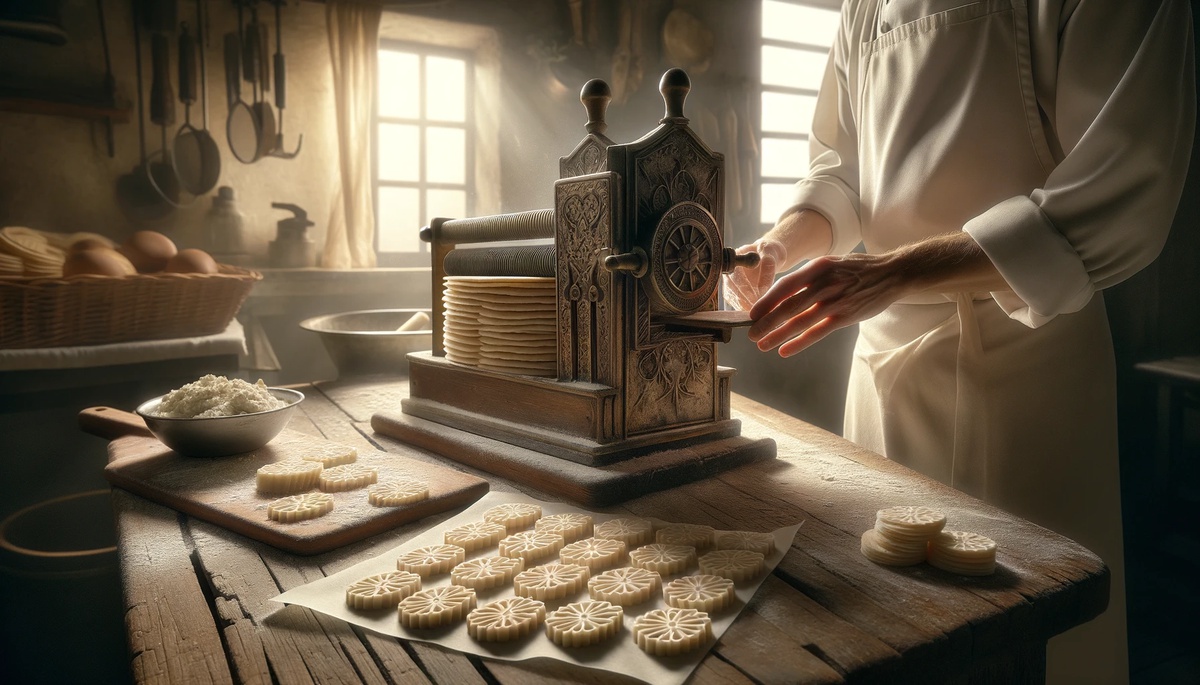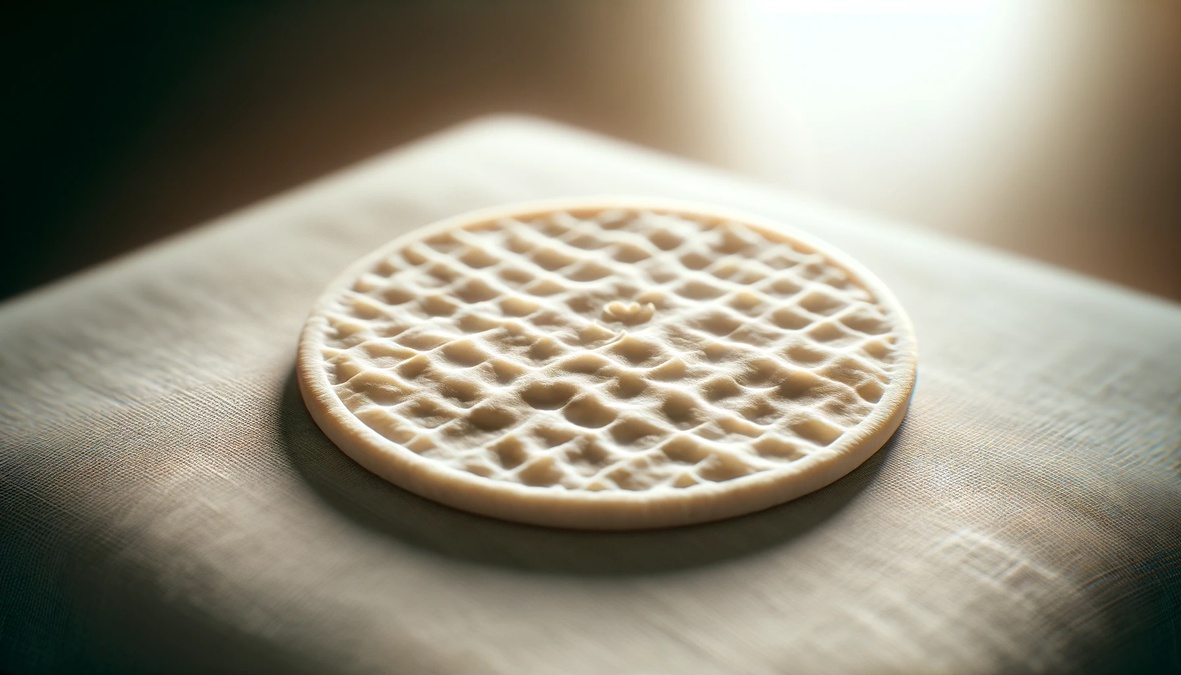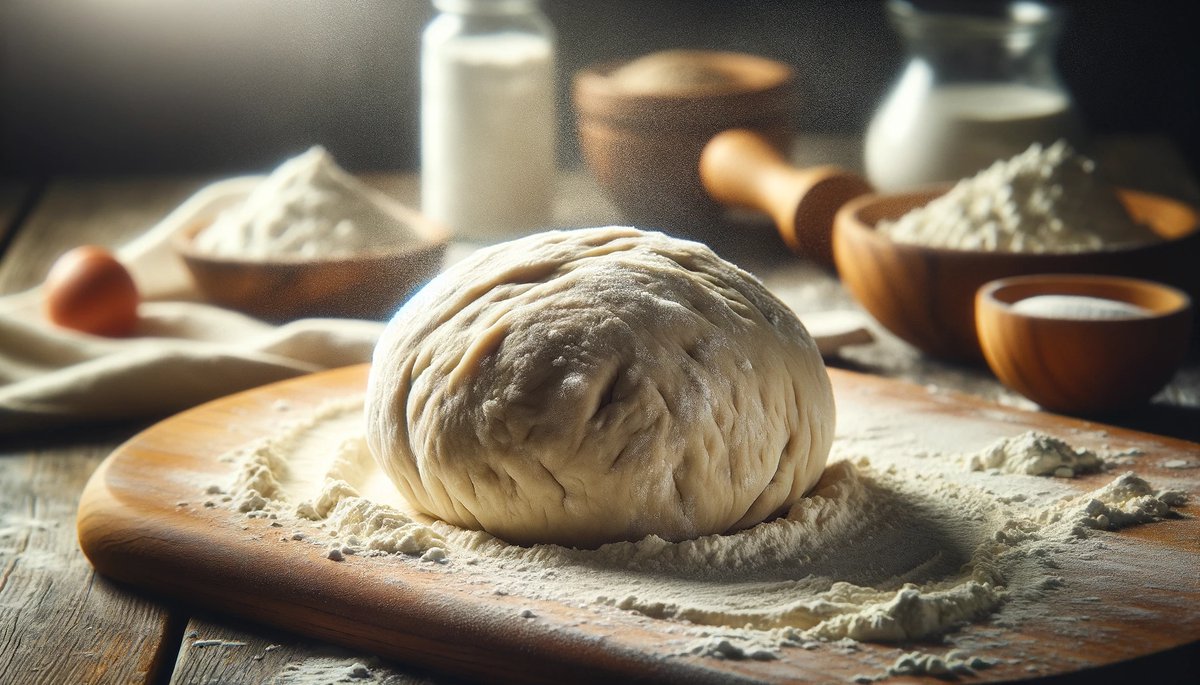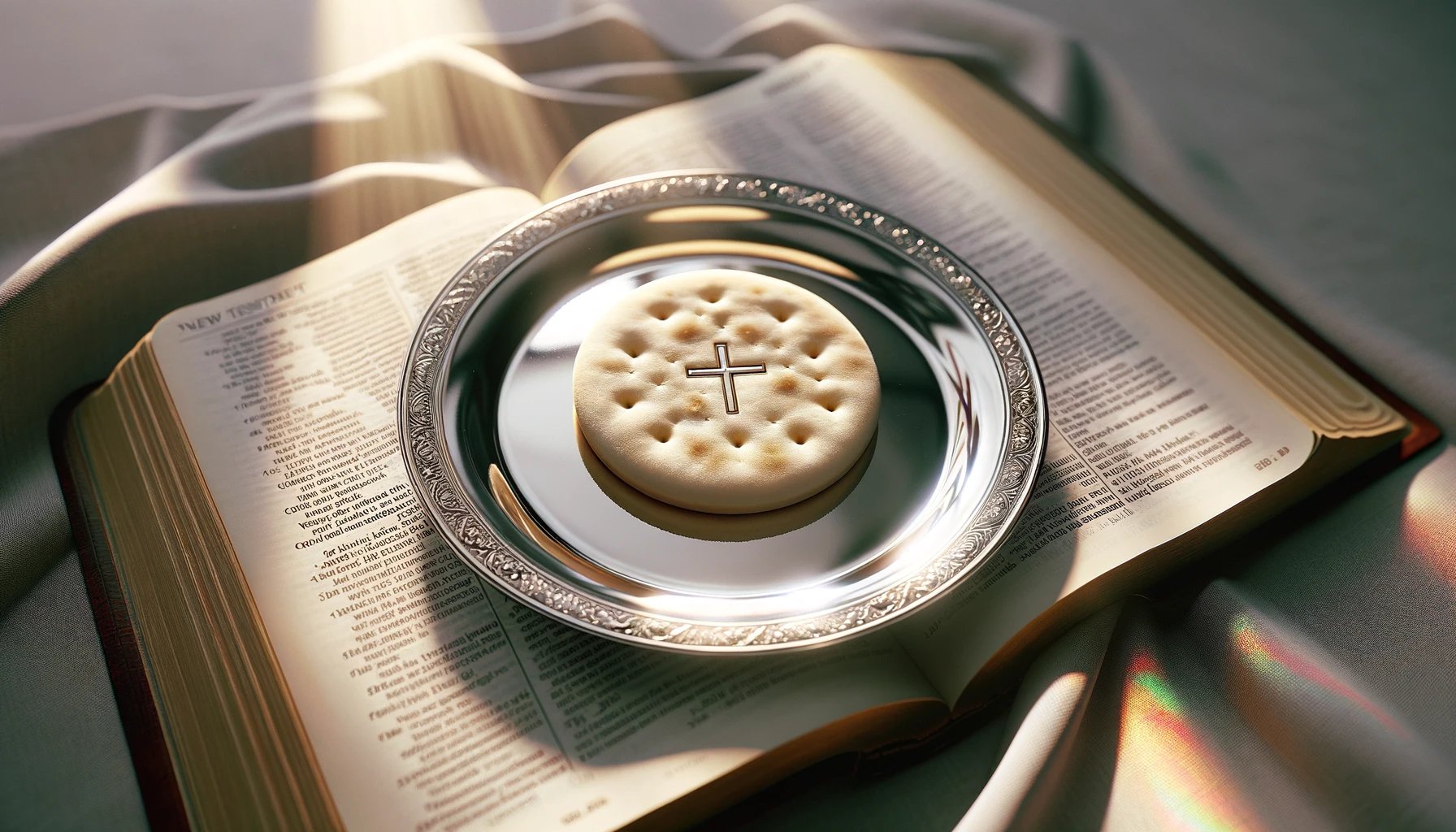Home>Theology and Spirituality>Who Makes The Communion Wafers
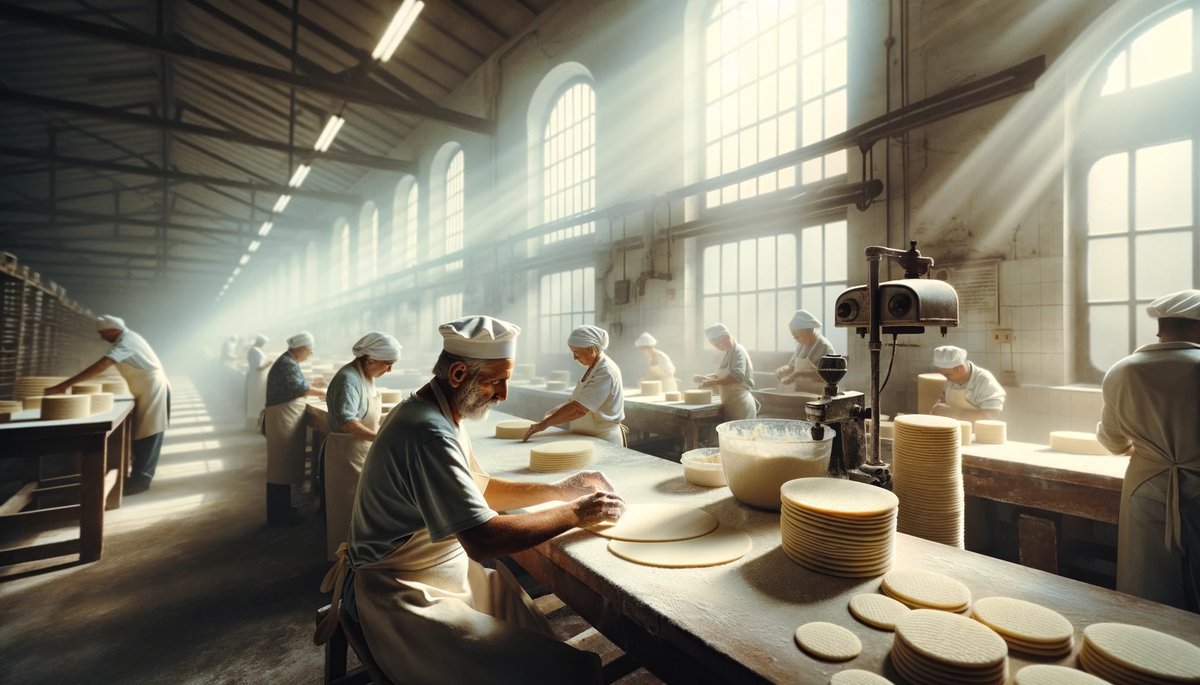

Theology and Spirituality
Who Makes The Communion Wafers
Published: February 19, 2024
Ericka Andersen, an editor at Christian.net, expertly merges digital strategy with content creation, focusing on faith and societal issues. Her communication skills enhance the platform's engaging narratives, fostering meaningful dialogue on belief's impact on society.
Discover the theology and spirituality behind the communion wafers. Learn about the significance and the process of making these sacred elements.
(Many of the links in this article redirect to a specific reviewed product. Your purchase of these products through affiliate links helps to generate commission for Christian.net, at no extra cost. Learn more)
Table of Contents
Introduction
The communion wafer, also known as the sacramental bread or the host, holds profound significance in various Christian traditions. This sacred element plays a central role in the Eucharist, a ritual commemorating the Last Supper of Jesus Christ with his disciples. The communion wafer symbolizes the body of Christ, and its consumption is a fundamental aspect of the Christian faith, signifying spiritual nourishment and unity within the community of believers.
Throughout history, the production and distribution of communion wafers have been shrouded in tradition and ritual, reflecting the reverence and solemnity with which they are regarded. The process of creating these wafers has evolved over centuries, blending ancient customs with modern techniques to meet the needs of diverse religious denominations.
As we delve into the intricate world of communion wafers, we will explore their historical significance, traditional ingredients, modern production processes, and the individuals and organizations responsible for their creation. Furthermore, we will examine the profound importance of communion wafers in religious practices, shedding light on their spiritual and communal significance within the Christian faith.
Join me on this enlightening journey as we uncover the mysteries and traditions surrounding the communion wafer, gaining a deeper understanding of its role in the spiritual tapestry of Christianity.
Read more: Who Sells Communion Wafers
History of Communion Wafers
The history of communion wafers is deeply intertwined with the origins of the Christian faith and the evolution of religious practices. The tradition of using bread in sacred rituals dates back to the time of Jesus Christ, who, according to the New Testament, instituted the Eucharist during the Last Supper with his disciples. It was during this momentous event that Jesus took bread, blessed it, broke it, and gave it to his disciples, instructing them to partake of it in remembrance of him.
In the early Christian church, the practice of sharing bread as a symbol of Christ's body became a central element of communal worship. The bread used in these early Eucharistic celebrations varied in form, ranging from leavened loaves to unleavened bread. Over time, the use of unleavened bread became more prevalent, influenced by the Jewish tradition of using unleavened bread during Passover.
The specific transition from ordinary bread to the distinct communion wafers known today took place gradually over centuries. By the early Middle Ages, the Church had established guidelines for the preparation and use of the Eucharistic bread, emphasizing its sacred nature and the need for meticulous care in its production. This led to the development of thin, unleavened wafers that were carefully crafted for use in the Eucharist.
The production of communion wafers became increasingly regulated, with specific requirements for their size, shape, and composition. These wafers were often imprinted with religious symbols or designs, further emphasizing their sacred purpose. The process of creating communion wafers was imbued with ritual and reverence, reflecting the deep spiritual significance attributed to these elements within the Christian liturgy.
As Christianity spread throughout Europe and beyond, the tradition of using communion wafers in the Eucharist became standardized across various denominations, each preserving unique customs and practices associated with their preparation and use. Today, the history of communion wafers stands as a testament to the enduring legacy of the Eucharist and its integral role in the expression of Christian faith and devotion.
Traditional Ingredients
The traditional ingredients used in the preparation of communion wafers are steeped in historical significance and symbolic meaning, reflecting the solemnity and sacred nature of the Eucharist. Throughout the centuries, the composition of these wafers has remained remarkably consistent, embodying a profound sense of tradition and reverence.
Unleavened wheat flour stands as the primary ingredient in the creation of communion wafers, a symbolic choice deeply rooted in religious tradition. The use of unleavened bread harkens back to the Jewish Passover, where the Israelites, in their haste to flee Egypt, did not have time to allow their bread to rise. This unleavened bread, known as matzah, has been a central element of Passover observances for millennia, and its significance carries over into the Christian Eucharist.
In addition to unleavened wheat flour, water is used to form the dough for the communion wafers. The simplicity of these ingredients underscores the purity and humility associated with the Eucharist, mirroring the unadorned nature of Christ's sacrifice and the spiritual nourishment offered to believers through the sacrament.
The preparation of the dough involves a meticulous process, with careful attention paid to the proportions of flour and water to ensure the desired consistency and texture. Once the dough is formed, it is rolled out and cut into precise, uniform circles, reflecting the reverence and attention to detail inherent in the creation of these sacred elements.
Furthermore, the use of a specialized communion wafer iron, often engraved with religious symbols or intricate designs, imparts a distinctive appearance to the wafers. This process not only serves a practical purpose in creating the thin, unleavened discs but also imbues them with a sense of sanctity and reverence, elevating them from mere bread to sacred vessels of spiritual significance.
The traditional ingredients used in communion wafers, with their deep historical roots and symbolic resonance, underscore the profound spiritual and communal importance of the Eucharist within the Christian faith. These elements, carefully selected and prepared in accordance with time-honored traditions, serve as a tangible embodiment of the sacred mysteries and enduring traditions of the Christian liturgy.
Modern Production Process
The modern production process of communion wafers combines centuries-old traditions with contemporary techniques to meet the needs of diverse religious communities. While the fundamental ingredients and symbolic significance remain unchanged, advancements in technology and manufacturing have streamlined the production of these sacred elements.
In modern facilities dedicated to the creation of communion wafers, the process begins with the careful selection of high-quality, food-grade unleavened wheat flour. This flour serves as the foundation of the communion wafers, embodying the purity and simplicity that underpin the Eucharistic tradition. Water is then added to the flour to form a smooth, pliable dough, meticulously prepared to achieve the desired consistency.
Once the dough is ready, it undergoes a precise rolling and cutting process, facilitated by specialized machinery designed to create uniform circles of the appropriate size and thickness. This mechanized approach ensures consistency and efficiency while upholding the reverence and attention to detail inherent in the production of these sacred wafers.
The next stage involves the baking of the communion wafers, a crucial step that requires precision and expertise to achieve the desired texture and appearance. Advanced ovens equipped with temperature control mechanisms ensure that the wafers are baked to perfection, resulting in thin, crisp discs that maintain their structural integrity while exuding a subtle, inviting aroma.
Following the baking process, the communion wafers are carefully inspected to uphold the highest standards of quality and craftsmanship. Any imperfections are meticulously addressed, underscoring the commitment to producing wafers that embody the sacred nature of the Eucharist.
Modern production facilities also prioritize hygiene and sanitation, adhering to rigorous food safety standards to ensure the purity and integrity of the communion wafers. Stringent protocols govern the handling and packaging of the wafers, safeguarding them from any potential contamination and preserving their sanctity until they reach the faithful.
The modern production process of communion wafers exemplifies the harmonious blend of tradition and innovation, honoring the rich historical legacy of these sacred elements while embracing the advancements of the modern era. Through meticulous craftsmanship and technological precision, these wafers continue to serve as tangible vessels of spiritual nourishment and unity within the Christian faith.
Who Produces Communion Wafers
The production of communion wafers is a specialized craft that requires precision, reverence, and a deep understanding of the sacred significance attributed to these elements within the Christian faith. Various individuals and organizations are dedicated to the meticulous creation of communion wafers, ensuring that they adhere to the highest standards of quality and tradition.
-
Religious Communities and Monasteries: Within the Christian tradition, many religious communities and monastic orders have upheld the time-honored tradition of producing communion wafers. Monasteries, renowned for their dedication to prayer, contemplation, and manual labor, often engage in the meticulous preparation of these sacred elements. The process of creating communion wafers within monastic settings is characterized by a profound sense of devotion and ritual, with monks and nuns employing ancient techniques and recipes passed down through generations.
-
Specialized Bakeries: In addition to religious communities, specialized bakeries play a pivotal role in the production of communion wafers. These bakeries are equipped with the expertise and equipment necessary to create wafers that meet the exacting standards of various Christian denominations. With a focus on precision and consistency, these establishments ensure that communion wafers are crafted with the utmost care and reverence, upholding the sacred nature of the Eucharist.
-
Liturgical Suppliers: Many religious supply companies and liturgical suppliers are dedicated to providing churches and religious institutions with a wide range of ceremonial items, including communion wafers. These suppliers often work in collaboration with religious authorities to produce wafers that align with specific denominational requirements and traditions. Their commitment to upholding the sanctity of the Eucharist is reflected in the meticulous attention to detail applied throughout the production process.
-
Artisanal Craftsmen: Some artisanal craftsmen, renowned for their skill in traditional baking and culinary arts, are also involved in the production of communion wafers. These individuals bring a unique blend of artistry and expertise to the creation of these sacred elements, infusing them with a sense of reverence and craftsmanship that resonates deeply within the Christian community.
The production of communion wafers is a collaborative effort, involving a diverse array of individuals and organizations united by a shared commitment to honoring the sacred traditions of the Eucharist. Through their dedication and expertise, these producers ensure that communion wafers continue to serve as tangible symbols of spiritual nourishment and unity within the Christian faith.
Read more: What Is Communion Wafer
Importance of Communion Wafers in Religious Practices
The communion wafer holds profound importance in religious practices, particularly within the Christian faith. As a central element of the Eucharist, the sacramental bread symbolizes the body of Christ, serving as a tangible representation of spiritual nourishment and unity within the community of believers. The significance of communion wafers extends beyond their physical form, encompassing spiritual, communal, and symbolic dimensions that enrich the religious experience of the faithful.
At the heart of its importance lies the theological concept of transubstantiation, embraced by Catholic and Orthodox traditions, where the communion wafer is believed to undergo a profound transformation during the Eucharistic liturgy. Through the act of consecration, the bread is believed to become the actual body of Christ, imbued with his divine presence. This belief underscores the sacred nature of the communion wafer, elevating it from mere bread to a vessel of profound spiritual significance.
Furthermore, the consumption of the communion wafer during the Eucharist fosters a sense of communal participation and spiritual unity among worshippers. As believers partake of the sacramental bread, they are reminded of their shared faith and the bond they hold as members of the body of Christ. This act of communion serves as a powerful symbol of fellowship, emphasizing the interconnectedness of the faithful within the larger Christian community.
The communion wafer also serves as a tangible expression of Christ's sacrifice and the redemptive power of the Eucharist. By partaking of the sacramental bread, believers are invited to reflect on the selfless act of Christ's crucifixion and the promise of salvation it embodies. This profound symbolism reinforces the central tenets of Christian faith, offering believers a means of spiritual sustenance and renewal.
Moreover, the ritualistic nature of the communion wafer's preparation and consumption underscores the reverence and solemnity with which it is regarded within religious practices. The meticulous crafting of the wafers and their presentation during the Eucharistic liturgy reflect the deep respect and devotion accorded to these sacred elements, enriching the spiritual experience of worshippers.
In essence, the communion wafer holds multifaceted importance in religious practices, encapsulating theological, communal, and symbolic significance within the Christian faith. Its role as a conduit of spiritual nourishment, unity, and reverence underscores its enduring relevance in shaping the religious identity and experience of believers across diverse denominations.
Conclusion
In conclusion, the communion wafer stands as a timeless symbol of spiritual nourishment, unity, and reverence within the Christian faith. Its rich historical legacy, rooted in the traditions of the Eucharist and the Last Supper, underscores its enduring significance as a tangible embodiment of sacred mysteries and communal devotion. The meticulous preparation and consumption of the communion wafer serve as a profound expression of faith, fostering a deep sense of spiritual connection and communal fellowship among believers.
The traditional ingredients and modern production processes employed in creating communion wafers reflect a harmonious blend of ancient customs and contemporary techniques, ensuring that these sacred elements continue to uphold the highest standards of quality and reverence. The involvement of religious communities, specialized bakeries, liturgical suppliers, and artisanal craftsmen in the production of communion wafers underscores the collaborative effort dedicated to honoring the sanctity of the Eucharist.
Furthermore, the theological, communal, and symbolic importance of the communion wafer within religious practices highlights its multifaceted role in shaping the spiritual identity and experience of believers. As a tangible representation of the body of Christ and a symbol of communal fellowship, the communion wafer serves as a poignant reminder of the central tenets of Christian faith, offering believers a source of spiritual sustenance and unity.
In essence, the communion wafer transcends its physical form, embodying the profound spiritual and communal significance inherent in the Eucharist. Its enduring presence within religious practices serves as a testament to the enduring legacy of the Christian faith and the timeless traditions that continue to enrich the lives of believers around the world. As we reflect on the intricate world of communion wafers, we gain a deeper appreciation for their role in the spiritual tapestry of Christianity, uniting believers in a shared experience of faith, fellowship, and reverence.
